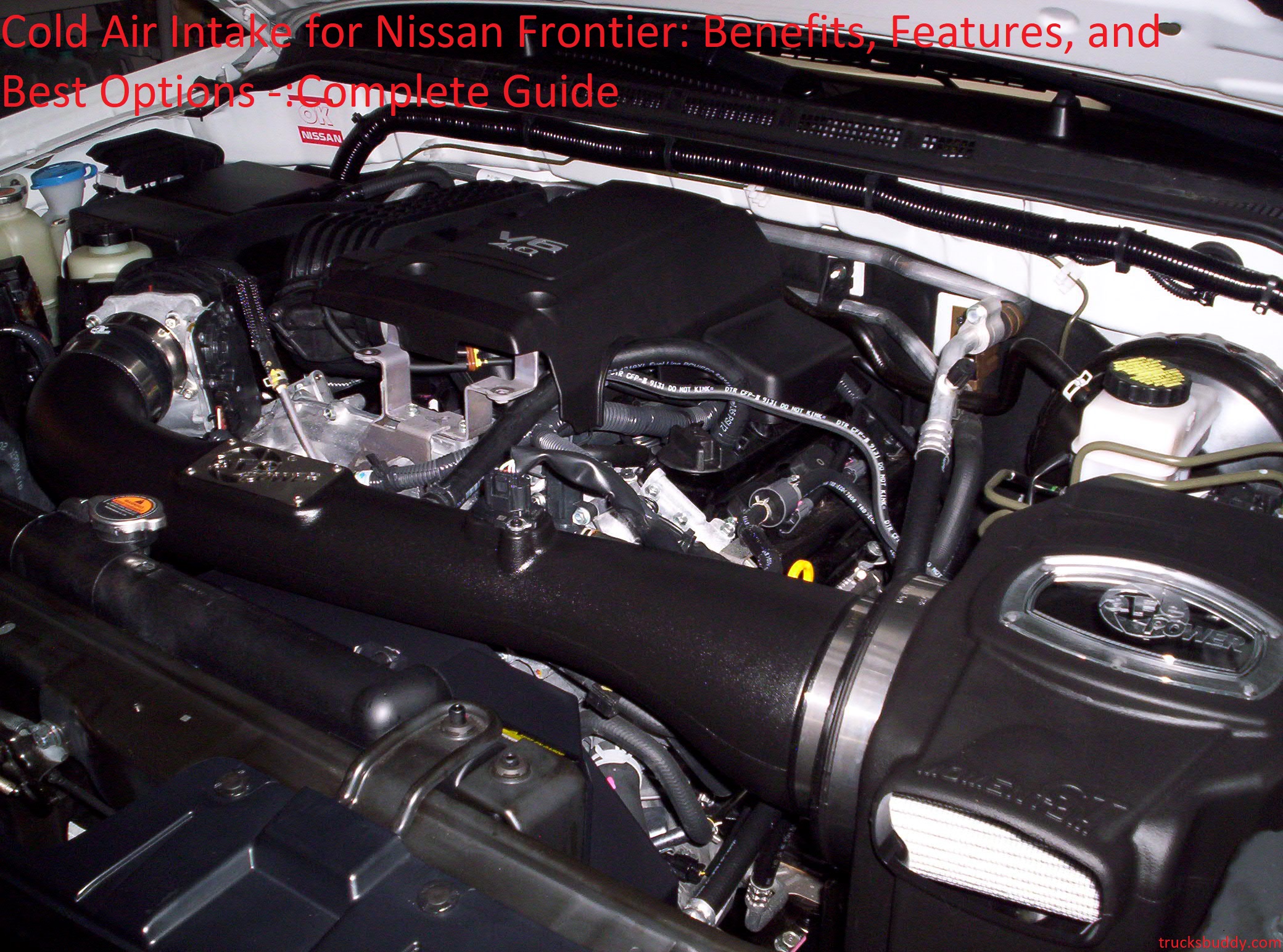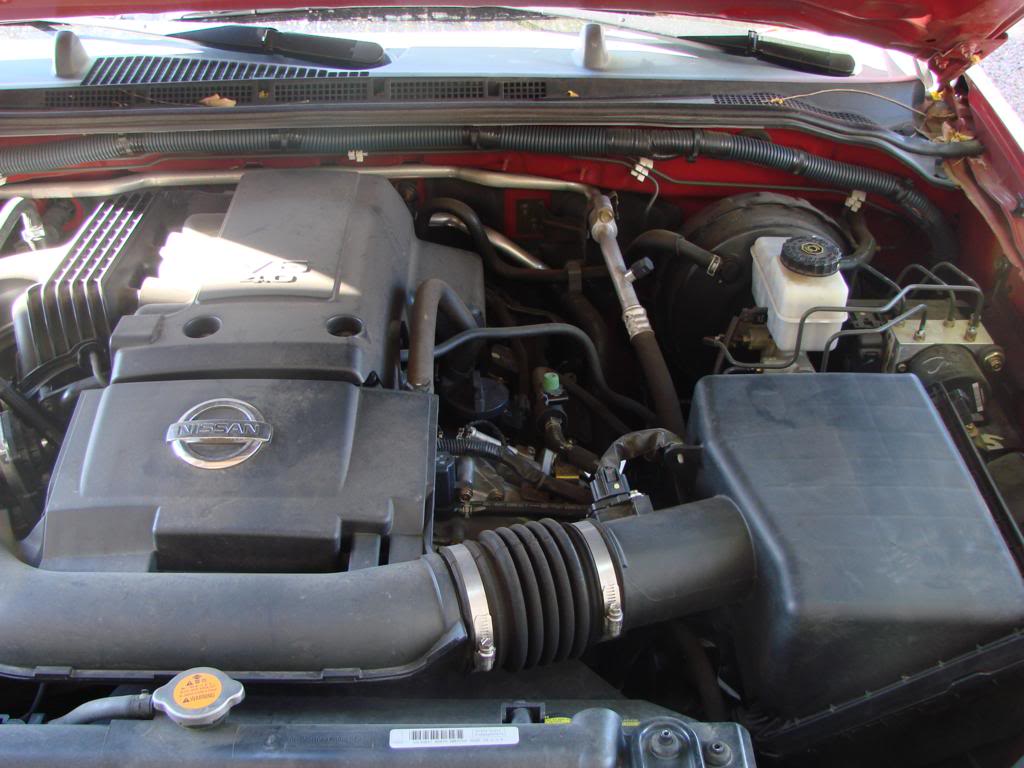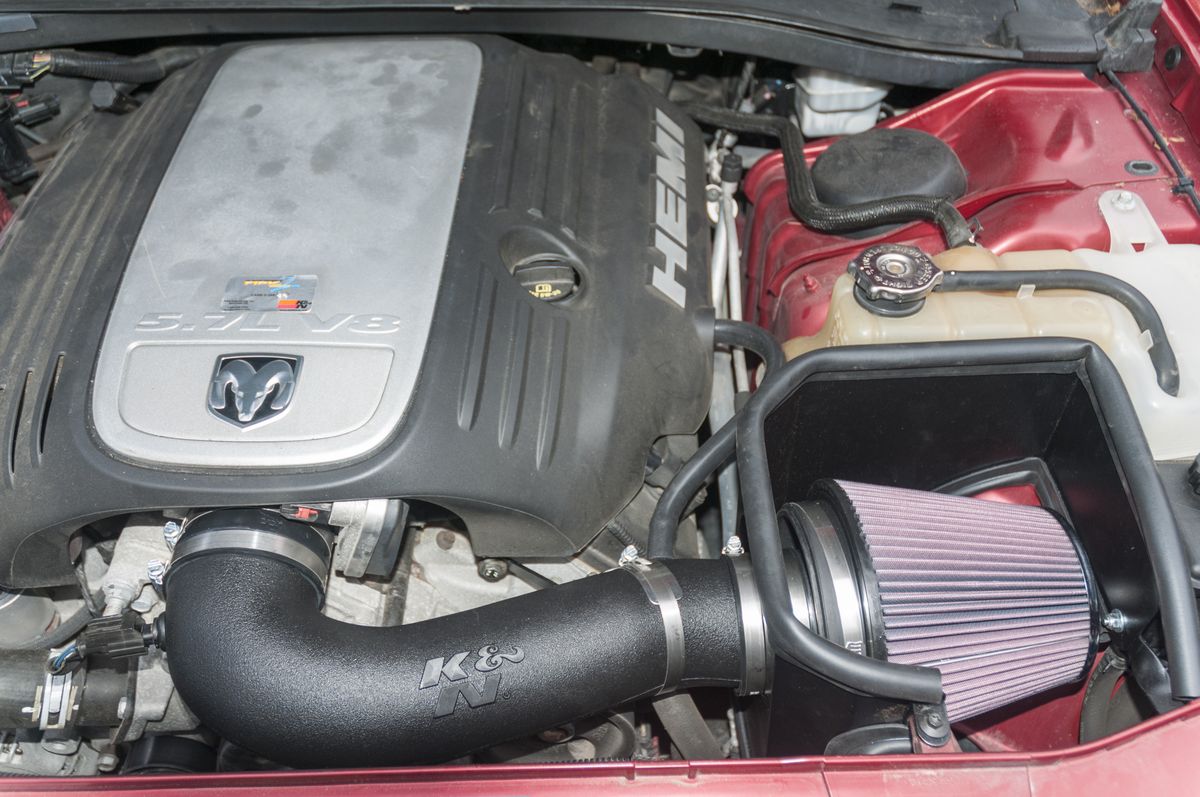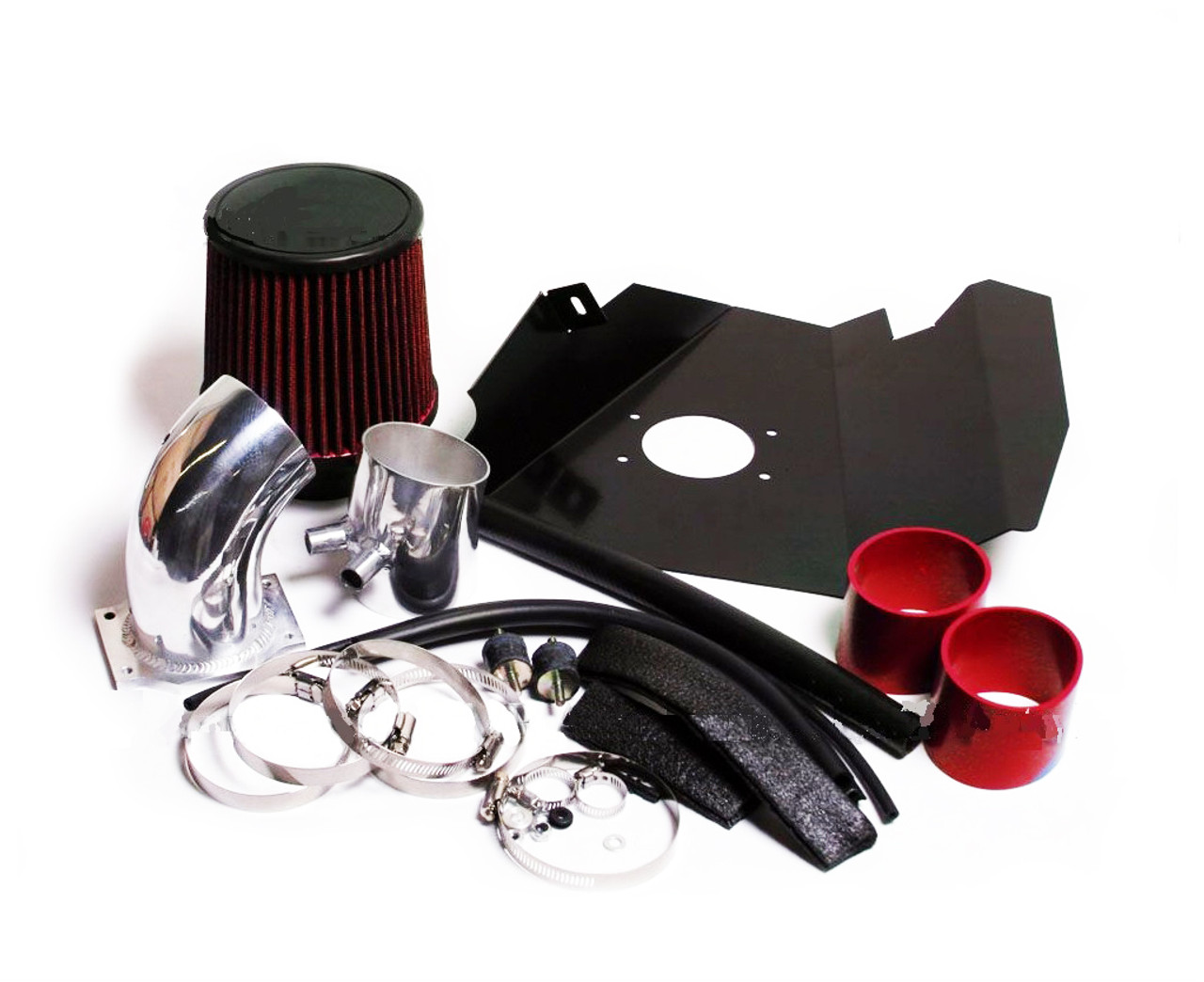Are you looking to maximize your Nissan Frontier‘s performance? A cold air intake is an essential upgrade that can help you do just that!
Not only will it boost horsepower, but it can also improve engine efficiency and enhance the overall driving experience.
In this guide, we’ll explore the benefits of a cold air intake, its key features, and the best options available.
Cold air intakes are an engine modification designed to increase horsepower and torque in vehicles by providing improved air flow. Modern engines are designed for peak efficiency, but if the temperature of the incoming air is decreased, the oxygen content will increase, resulting in a greater amount of combustion. A cold air intake can also improve the power and response of a turbocharger. Installing one of these systems in a car or truck typically requires professional assistance though there are some DIY options available.
This guide discusses the benefits, features, and best cold air intake options for a Nissan Frontier pickup truck. It provides an overview of characteristics such as filtration type, filter material, installation type, design as well as other factors to consider when determining which cold air intake is right for your Frontier.

Benefits of a cold air intake for Nissan Frontier
Cold air intakes are an important addition to any car, but especially to a Nissan Frontier. The main purpose of having a cold air intake is to provide your engine with more cold air and enhanced efficiency. This increased flow of air helps to create a more efficient mix with the gasoline helping you get improved performance, mileage, and power from your vehicle. Cold air intakes can also help you improve handling responsiveness by reducing throttle lag and making it easier to accelerate from rpms that are lower than normal.
The colder the air moving through your engine, the denser it is which creates larger molecules for fuel and air to mix with, effectively creating a greater combustion in the cylinders when ignited. By increasing the power output in individual cylinders, you get an increase in overall peak horsepower. This provides you with improved acceleration off-the-line when starting from a standstill as well as during passing maneuvers on highways or city streets. Additionally, this can help extend the life expectancy of your engine by decreasing stress on internal components due to increased pressure in individual cylinders caused by higher combustion rates due to denser airflow into them.
In general, installing a cold air intake can provide many benefits such as:
- Increased power output
- Improved fuel efficiency
- Quicker acceleration off-the-line
- Reduced throttle lag
- Extended engine life expectancy
Improved engine performance
A cold air intake system is one of the easiest and most cost-effective modifications to increase performance in a Nissan Frontier. A cold air intake works by allowing colder, denser air to enter the engine. This denser air increases horsepower and torque by providing a higher oxygen content to the combustion chamber which in turn leads to better combustion and as a result, an improved driving experience. The cooler air reduces exhaust temperatures, increases fuel economy and adds an aggressive look under the hood too!
Benefits of installing an aftermarket cold air intake on your Nissan Frontier include:
- Improved performance: Colder, denser air produces more power from less fuel, improving both torque and horsepower output from your engine without sacrificing fuel economy.
- Increased fuel efficiency: Colder air helps reduce exhaust temperatures which can help improve overall fuel economy.
- Increased throttle response: Increased airflow leads to reduced turbo lag when accelerating quickly and increased responsiveness when driving in stop-and-start traffic.
- Superior filtration: Cold air intakes come with high quality filters that are effective at trapping contaminants while still providing maximum airflow for enhanced performance.
Increased horsepower and torque

Cold air intakes work to increase the horsepower, torque, and engine efficiency of your Nissan Frontier by moving ambient, cooler air into the intake manifold instead of warm air from the engine bay. This colder air is more oxygen-dense, and therefore provides more fuel to the engine. The cooler air also reduces heat in the combustion chamber that can create a “knocking” sound from improper combustion events caused by excessively hot temperatures.
In most vehicles, installing a cold air intake on a Nissan Frontier can result in an increase of about 10% more horsepower and even up to 15% more torque than with stock parts. With greater torque and power comes quicker acceleration times (0-60), along with improved fuel economy due to your motor not needing to work harder to create movement.
Improved fuel efficiency
Installing a cold air intake system in your Nissan Frontier can improve fuel efficiency. This is because the colder, denser air will burn faster than the hot, humid air in the engine’s factory intake manifold. Since the cold air is able to more effectively combust, your vehicle will consume less fuel for a given amount of power output.
In addition, when equipped with a quality filter, your engine will draw cleaner incoming airflow which further reduces fuel consumption. Lastly, cold air intakes are designed to reduce any turbulence during the process of providing fuel and air to your engine – this helps optimize performance and efficiency as well.
With all these advantages combined you should experience better mileage over time.
Features of a cold air intake for Nissan Frontier
Cold air intakes for Nissan Frontier vehicles offer several distinct functions, as well as benefits. The main purpose of a cold air intake is to ensure the engine pulls in cooler, denser, and more oxygen-rich air. This helps the engine perform more efficiently and with more power. A cold air intake can also contribute to improved fuel economy, longer engine life, and better performance when driving in extreme conditions such as off-roading or at high speeds.
When choosing a cold air intake for a Nissan Frontier vehicle, there are several essential features to consider. Before purchasing an aftermarket kit, you need to check that it is designed for your specific make and model of vehicle. Additionally, look for options which feature high quality components such as high-flow filters that allow increased airflow into the system. A heat shield to deflect hot underhood temperatures away from the filter is another beneficial feature. Last but not least, make sure the kit includes instructions on how to install it properly so that you can get the most out of its benefits without compromising your vehicle’s performance or reliability in any way.
Material and construction
When selecting a cold air intake for your Nissan Frontier, material construction and design should be taken into consideration. Cold air intakes typically feature a conical filter made of cotton-gauze material. This type of filter will allow good airflow while still ensuring that dust and other small particles are not carried into the engine.
Other materials used to construct cold air intakes may include plastic components, flexible tubing, aluminum heat shields and brackets. Constructed from these materials, cold air intakes work by allowing for increased airflow to the engine via a larger diameter pipe or tubing configuration. Many cold air intakes are designed with built-in heat shields or filters to reduce unwanted heat from entering the engine compartment and robbing performance from the powertrain system.
Filter type

An air filter is the main component of a cold air intake system. It is responsible for the filtration of the incoming cold air. Air filters come in a variety of shapes, sizes and types:
-Panel Air Filters – These are standard 8 to 12-inch rectangular air filters with pleated cloth and paper elements. This type of filter provides basic protection against dirt, dust, and debris while allowing adequate airflow.
-Cone Air Filters – These generally have an aluminum or plastic base with foam covering over it; they come in various shapes and sizes such as oval or conical. Cone filters allow more free flow of air than panel filters but do not guarantee the same amount of filtration.
-Cotton Gauze Filters – Usually used in racing applications, cotton gauze filters are constructed from multiple layers of oiled cotton gauze fabric with metal mesh surrounds. They promote maximum engine performance while keeping out large particles from entering the engine bay.
-Performance Filter Element Upgrade – OEM filter elements are often replaced to upgrade engine performance because they also restrict airflow like OEM units do, but due to high quality construction and superior materials offer higher efficiency when it comes to trapping dirt particles without compromising on airflow too much.
Filter location
The location of the cold air intake for the Nissan Frontier will vary between models. It can be found underneath the hood, near the engine or behind the front bumper.
Some models have a variety of options that are designed to fit in specific places on the vehicle:
- Underneath the hood – This type of installation is typically reserved for performance driving, as it requires accessing and possibly unbolting certain components within the engine bay. However, if your vehicle already features an intake system that is designed to feed air directly to certain components within the engine block, this type of setup can be helpful in optimizing performance.
- Cabin filter replacement – Many newer Nissan Frontiers come with a cabin filter or an HVAC (heating and ventilation system) filter that needs to be replaced periodically. Replacing this type of component is typically easy and does not require any specialized tools or knowledge. Depending on your model and year, this component may be found near other vital parts such as spark plugs, fuse boxes, relays, etc.
- Engine airbox replacement – This type of installation involves replacing an existing factory-installed airbox with aftermarket intakes custom-designed for your vehicle specifically made for optimal performance enhancement. Both cold air and short ram intakes are available from many aftermarket manufacturers growing in popularity over standard OEM (Original Equipment Manufacturer) parts due to their promise in boosting HP (horsepower) and torque output while reducing fuel consumption at higher RPMs (revolutions per minute).
Maintenance and care of a cold air intake for Nissan Frontier
Maintaining and caring for your cold air intake system is key to keeping it in optimal operation. Without proper care, dirt particles can accumulate in the system, reducing its performance. This ultimately requires more frequent servicing or replacement of your cold air intake system, which can be a costly endeavor. Taking the time to regularly care for and maintain your cold air intake will ensure its longevity and dependability. Here are some tips on how to keep your Nissan Frontier’s cold air intake in top condition:
– Clean the mesh filter: Remove the mesh filter from the assembly every 6 months or so and use a gentle cleaner to reinvigorate it. This should help keep any debris from getting caught up in it and make sure that your engine still gets maximum delivery of colder air .
– Avoid moisture: It is important that you avoid exposing your cold air intake system to moisture or other liquids (such as oil). Moisture will cause corrosion on metal components, which leads to poor performance when drawing colder air into the engine. In addition, oil will block airflow through the filter, resulting in reduced engine power.
– Check hoses regularly: Inspect all hoses connected to the assembly frequently for signs of damage or wear. If any hoses appear worn, cracked or leaking they should be replaced immediately as they will impact overall performance if neglected.
– Store properly if vehicle is not driven often: If you don’t drive your Nissan Frontier very often, be sure that you remove the filters and store them separately if possible; this keeps them safe from moisture while also protecting their lifespan over time.
Cleaning the air filter
As with any air intake system, regular care is important. Over time, the filter can become clogged with dirt and debris from the outside environment. A clean filter will ensure optimal performance and help protect your engine from dust and other pollutants.
To properly care for your cold air intake filter, you should inspect the air filter every 3 months and replace it every 12 months or 12,000 miles. When replacing the filter, make sure to use only a brand-approved OEM replacement part so that your cold air intake will perform as designed. Additionally, cleaning your air filter at least once every year can extend its life further.
Cleaning can be accomplished using an aerosol foam cleaner that is safe to use on foam filters and carefully follow all the manufacturers instructions on how to properly clean and store your rotor blades and housings if you choose a rotational-style system.
Inspecting the intake system
Before diving into an installation of a cold air intake system for your Nissan Frontier, make sure to inspect the existing intake system. All factory intakes are designed for a very specific purpose and are often put together with inexpensive plastic components.
Inspecting the existing intake setup will give you a good idea of what kind of cold air intake system you need and what features it should have. Look over all connecting components and inspect the filter, resonator box, piping, and throttle body inlet for any damage that might be present. Check hose clamps to make sure they are secure and not loose or cracked.
Be aware of any plastic or rubber components used in the factory setup that may require replacing or needing extra attention after you have installed your new cold air intake system onto your Nissan Frontier engine
Troubleshooting common problems

If you’re having trouble with your cold air intake system, it’s important to identify the issue and address it quickly. Most issues can be solved with a few simple troubleshooting steps. Below are some of the most common problems associated with cold air intakes and how to fix them:
- Poor Performance – If you’re experiencing a decrease in engine power or fuel efficiency, check your filter for clogging or dirt buildup. Filters should be changed regularly to ensure optimal performance from your intake system.
- Low idle – If your vehicle is experiencing low idle, check the hose connections for leaks or incorrect installation. Also make sure all vacuum lines are properly routed and connected securely.
- Noisy Engine – Experiencing a loud sound when accelerating? This could occur if the intake tubing was not installed correctly and is too close to hot exhaust components underhood, creating excessive heat that escapes through openings in the tube causing resonance noise. Make sure tubing is properly insulated by wrapping rubber foam around it where necessary to minimize excess engine noise caused by heat transfer into the tube interior.
Conclusion
In conclusion, a cold air intake system is a great investment for your Nissan Frontier. It can improve engine performance, provide fuel efficiency gains, and increase airflow to the engine, allowing you to enjoy greater power while also saving money. Given the variety of available options, it is important that you carefully consider the features offered and determine which one best serves your needs.
It is easy to install these intake systems yourself; however, if you are unfamiliar with the process or don’t feel confident enough to do so, it is always recommended that you take your vehicle in for professional installation. Whichever option you choose for your cold air intake system, your Nissan Frontier will thank you for it!
FAQ’s
What are the benefits of a cold air intake on a truck?
Increased horsepower and torque
Improved throttle response
Better fuel efficiency
Enhanced engine sound
Is it a good idea to have a cold air intake?
Yes, if you want to improve your truck’s performance and fuel efficiency.
What is the disadvantage of a cold air intake?
The risk of water ingestion during heavy rain or flooding.
Does a cold air intake improve engine life?
It can help by reducing engine heat and improving air flow, but it’s not a guarantee.
Why not to use cold air intake?
If you frequently drive in areas with heavy rain or flooding, a cold air intake may not be the best choice.
How much HP does cold air intake add?
It varies depending on the make and model of the truck, but typically between 5-15 horsepower.
Does cold air intake change sound?
Yes, it can enhance the engine sound by allowing more air to flow into the engine.
Is cold air intake good for diesel?
Yes, it can improve the performance of diesel engines by increasing air flow and reducing engine heat.
Can cold air intakes damage engine?
If installed improperly or used in areas with heavy rain or flooding, a cold air intake can potentially damage the engine.
Does cold air intake affect fuel?
It can improve fuel efficiency by allowing the engine to breathe easier and reducing engine heat.
See Also:
- Best bug deflector for nissan frontier 2023
- Best cold air intake for nissan frontier 2023
- Best accessories for nissan frontier 2023
- Best air bags for nissan frontier 2023
- Best 4 inch lift kit for nissan frontier 2023

